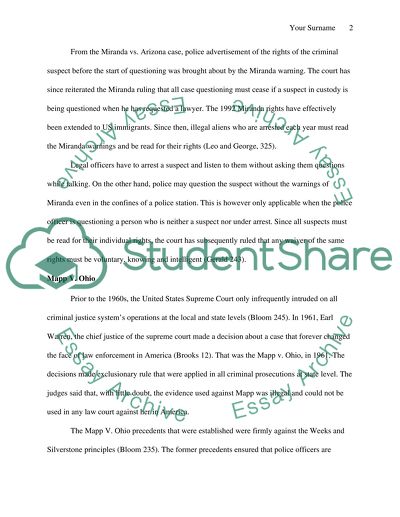Cite this document
(“Mapp v. Ohio and Miranda v. Arizona Supreme Cases and their Effects on Assignment - 3”, n.d.)
Mapp v. Ohio and Miranda v. Arizona Supreme Cases and their Effects on Assignment - 3. Retrieved from https://studentshare.org/law/1416165-essay
Mapp v. Ohio and Miranda v. Arizona Supreme Cases and their Effects on Assignment - 3. Retrieved from https://studentshare.org/law/1416165-essay
(Mapp V. Ohio and Miranda V. Arizona Supreme Cases and Their Effects on Assignment - 3)
Mapp V. Ohio and Miranda V. Arizona Supreme Cases and Their Effects on Assignment - 3. https://studentshare.org/law/1416165-essay.
Mapp V. Ohio and Miranda V. Arizona Supreme Cases and Their Effects on Assignment - 3. https://studentshare.org/law/1416165-essay.
“Mapp V. Ohio and Miranda V. Arizona Supreme Cases and Their Effects on Assignment - 3”, n.d. https://studentshare.org/law/1416165-essay.


